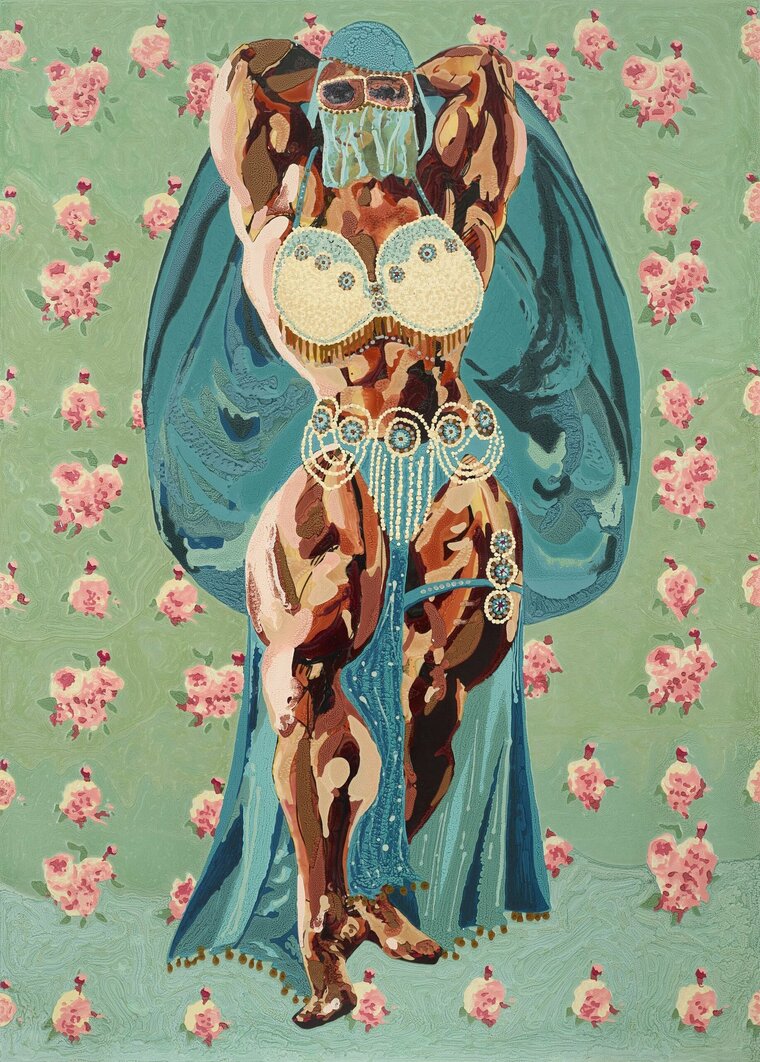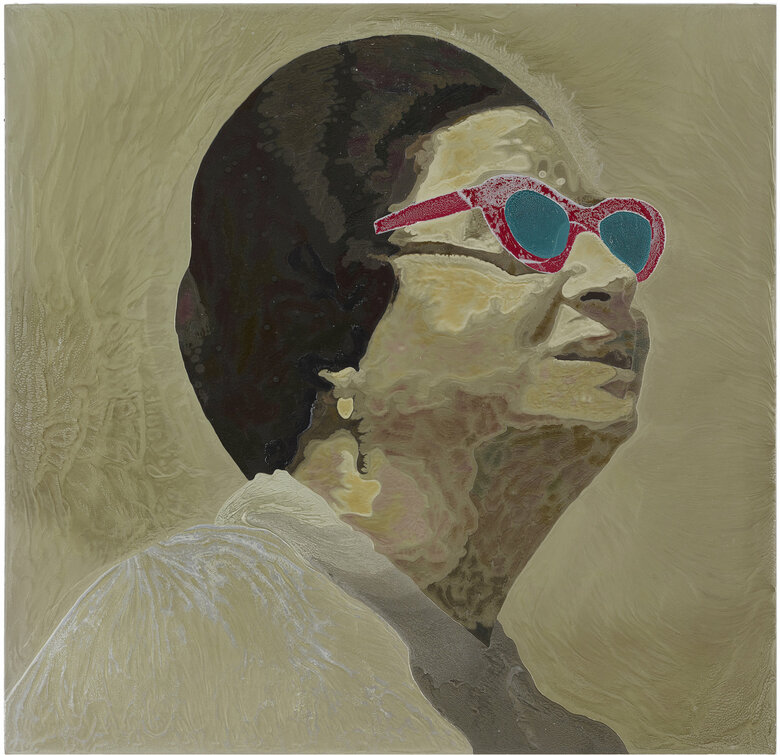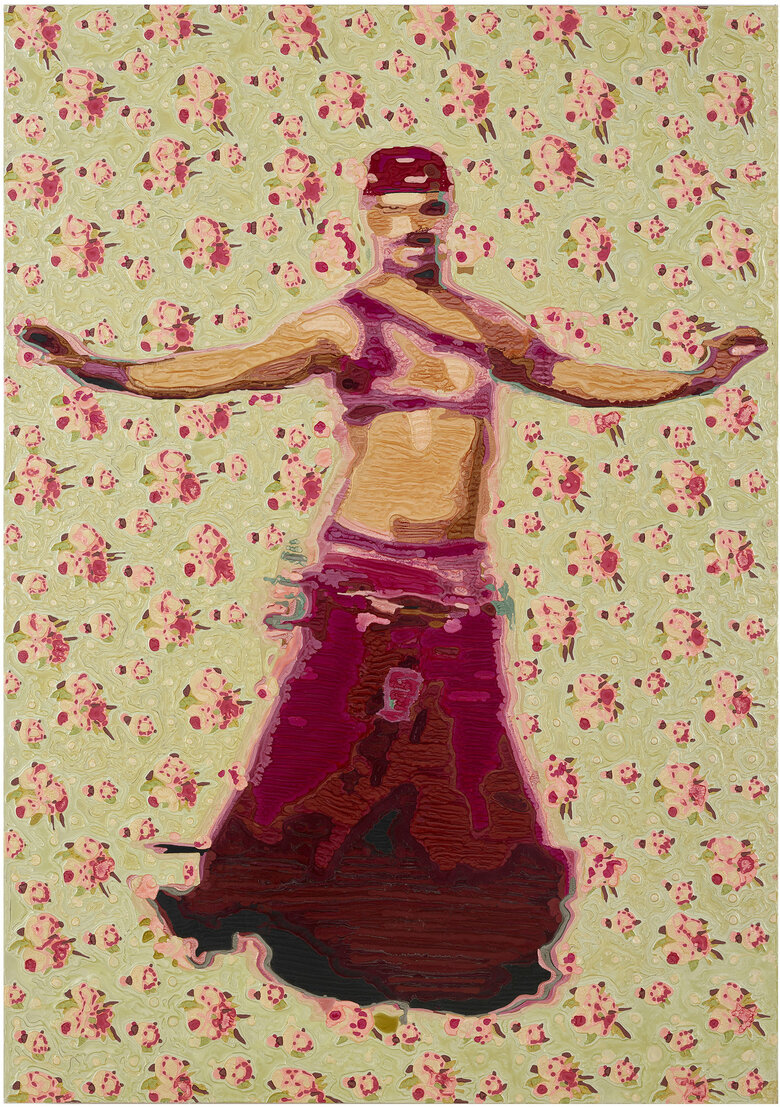Through El Badlah, 2016 and The Belly Dancer, 2022 Egyptian artist Mohamed Taman, delves into the multifaceted nature of identity, perception, and cultural interpretation. In these two paintings, the depiction of the belly dancer serves as a lens through which viewers are prompted to question preconceived notions and societal constructs.
Embedded within these artistic representations is a reflection of Egyptian culture’s divergent perspectives on belly dancing. While some view it as a dance of seduction, others recognize its origins as a fertility ritual deeply rooted in cultural celebrations and rites of passage. Taman’s exploration of these contrasting viewpoints through gender nonconformity underscores the complexity of cultural identity and the multiplicity of meanings attributed to cultural practices.
In El Badlah painting the portrayal of an androgynous and blurred figure adorned in magenta ‘badlah’ – traditional belly dancing apparel – challenges conventional gender norms. The depiction of a man (who also has a mustache to heighten his representation as distinctly male) as a belly dancer confronts the viewer with their own societal expectations. The blurred contours and features of the figure highlights the dynamism of the dancer’s movement.
The Belly Dancer presents a starkly different yet similar interpretation. Here, the belly dancer assumes a muscular physique reminiscent of a bodybuilder, with the face veiled and only the eyes visible. This portrayal challenges assumptions about the exact gender of the dancing figure, allowing for a wide diversity of assumptions to all be applicable: this could be a muscular woman, or a transwoman, etc. Here too, the goal is to place the viewer face to face with their assumptions about the spaces and behaviors that different genders occupy and enact.
Through meticulous layering of colors and materials, including petroleum derivatives and oil oxides, Taman creates works that distort the boundaries of societal norms and invites viewers to reconsider their perspectives. This challenges viewers to critically engage with the artwork, prompting them to question their initial impressions and dive deeper into the underlying themes of tradition and individuality. They serve as a commentary on gender expectations and the complexities of cultural interpretation, as well as the power of art to provoke a wider discourse.








